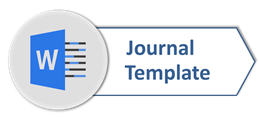Applying PLEASE Strategy to Teach Writing Skill on Students with Different Linguistic Intelligence
Abstract
Full Text:
PDFReferences
Akincilar, V. (2010). The Effect of PLEASE Strategy Training Through The Self-Regulated Strategy Development (SRSD) Model on Fifth Grade EFL Students’ Descriptive Writing: Strategy Training on Planning. Middle East Technical University. Retrieved from http://etd.lib.metu.edu.tr/upload/3/12611947/ index.pdf.
Amstrong, T. (2009). Multiple Intelligences in The Classroom. Alexandria: ASCD.
Brown, H. D. (2001). Teaching by Principles: An Interactive Approach to Language Pedagogy 2nd Edition. New York: Longman.
Choudhury, N. R. (1998). Teaching English in Indian Schools. New Delhi: APH Publishing Corporation.
Cresswell, J. W. (2008). Educational Research: Planning, Conducting, and Evaluating Quantitative, and Qualitative Research. New Jersey: Pearson Education, Inc.
Dash, Neena & Dash. (2007). Teaching English as an Additional Language. New Delhi: Atlantic Publishers & Distributors, Ltd.
Davis, K., Christodoulou, J., Seider, S., Gardner, H. The Theory of Multiple Intelligences. Harvard University.
Gardner, H. (1983). Frames of Minds: The Theory of Multiple Intelligence 10th Ed. New York: Basic Books.
Graham, S., & Harris, K. R. (2007). Best Practices in Teaching Planning. In Graham, S., Macarthur, A., & Fitzgerald, J (Eds.), Best practices in writing instruction. 119-140. New York, NY: The Guilford Press.
Harmer, J. (2001). How to Teach English: An Introduction to the Practice of English Language Teaching. Longman: London.
Heaton, B. J. (1975). Writing English Language Test. Longman: London and New York.
Hoerr, T. (2000). Becoming a Multiple Intelligences School. Alexandria: ASCD.
Liza, M., & Rafnaldi. (2013). Using PLEASE Strategy in Teaching Writing a Descriptive Text. Journal of English Language Teaching.1(2), 436-444.
Raushuluddin (2015). Mengetahui Kecerdasan Linguistik Anak. Retrieved from http://raushuluddin.blogspot.co.id/2015/12/10-pertanyaan-untuk-mengetahui.html
Richards, J. C. & Renandya, W. A. (2002). Methodology in Language Teaching: An Anthology of Current Practice. Cambridge: Cambridge University Press.
Spartt, Mary & Alan. (2005). The Teaching Knowledge Test Course (TKT). New York: Cambridge University Press.
The David Lazear. (2003). A Different Kind of Smart, A Different Kind of Learning. Multiple Intelligences. Retrieved from http://davidlazeargroup.com
Welch, M. (1992). The “PLEASE” Strategy: A Metacognitive Learning Strategy for Improving the Paragraph Writing of Students with Mild Learning Disabilities. Learning Disability Quarterly, 15, (2), 119-128.
Wilson, L. O. (2014). Multiple Intelligence Indicators. The Second Principle. Retrieved from http://thesecondprinciple.com/optimal-learning/multiple-intelligence-indicators/
DOI: https://doi.org/10.33365/ts.v16i1.120
Refbacks
- There are currently no refbacks.
Copyright (c) 2018 TEKNOSASTIK
Teknosastik: Jurnal Bahasa dan Sastra
Publisher: Universitas Teknokrat Indonesia
Address: Zainal Abidin Pagaralam Street 9-11, Bandar Lampung, Indonesia
Website: https://ejurnal.teknokrat.ac.id/index.php/teknosastik/index

Creative Commons Attribution-ShareAlike 4.0 International License






